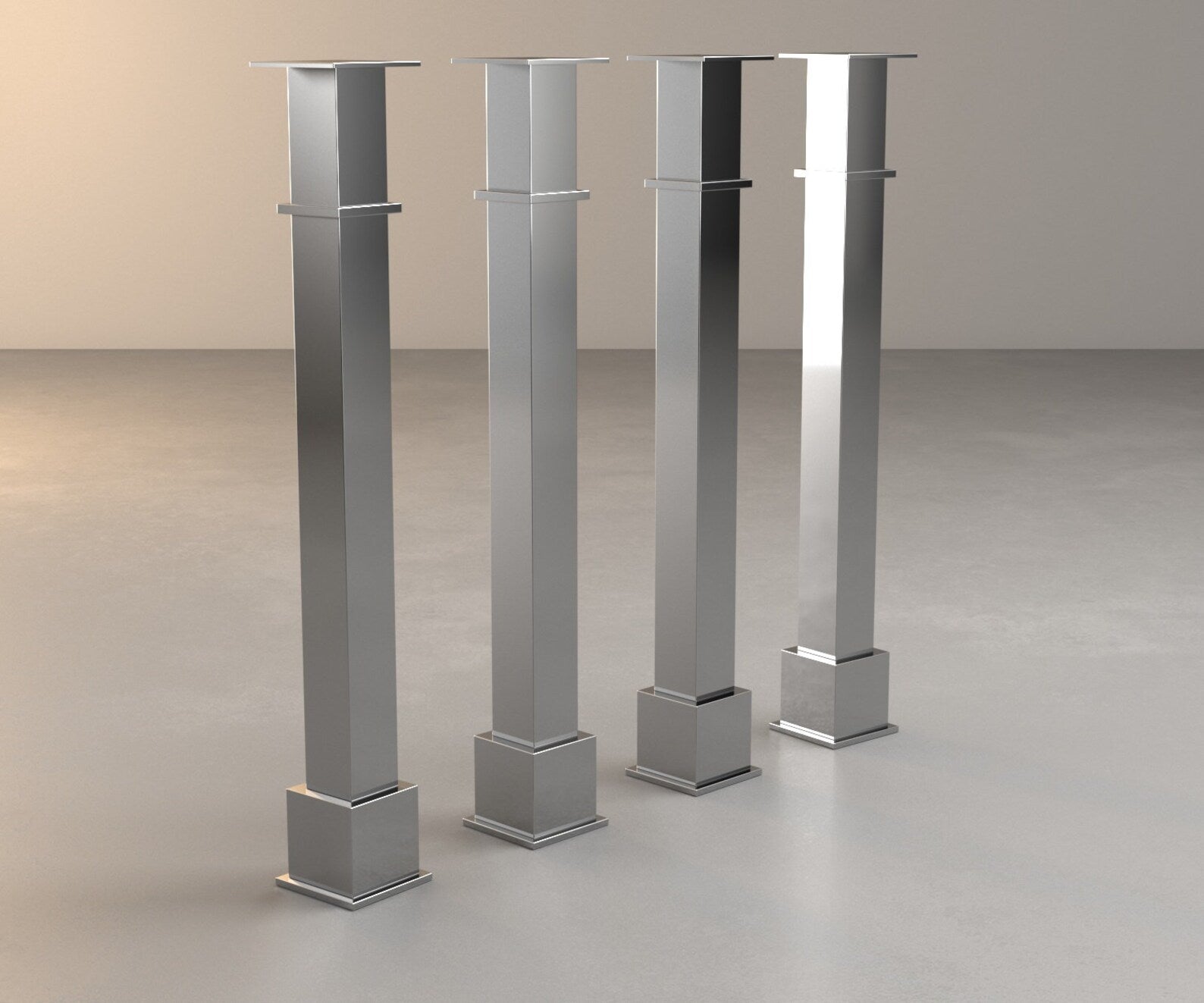Make Your Kitchen Island Stand Out with Customized Legs For Kitchen Island
Make Your Kitchen Island Stand Out with Customized Legs For Kitchen Island
Blog Article
Essential Variables to Consider When Picking Legs For Kitchen Island
Picking the appropriate legs for a kitchen area island includes a careful evaluation of several factors that can dramatically influence both performance and aesthetic charm. As we explore these elements, it ends up being clear that each decision can have far-reaching ramifications for the general kitchen area experience.
Material Options
When choosing legs for a cooking area island, comprehending the different product options is essential for achieving both aesthetic allure and architectural honesty (Legs For Kitchen Island). The choice of material substantially affects not just the durability of the island however also its total style and functionality
Wood is a prominent selection, using warmth and convenience. Solid woods, such as oak or maple, offer toughness and can be stained or repainted to match the cooking area decor. Metal legs, often made from stainless-steel or wrought iron, contribute a modern-day and commercial feeling while guaranteeing durability and stability. These products are resistant to wear and can sustain considerable weight, making them perfect for larger islands.
One more option is crafted products, like MDF or plywood, which can be more cost-effective while still offering a variety of surfaces. They may not supply the very same level of security as strong wood or metal. Legs For Kitchen Island. Last but not least, products such as acrylic or glass can develop a modern appearance, though they may require added assistance to make certain security.
Inevitably, the option of product for kitchen area island legs need to align with the preferred performance and the general theme of the cooking area.
Design And Style

When thinking about style, the shape and surface of the legs are important. Conical legs can provide a sense of lightness and style, while thicker, extra robust legs can share stamina and stability. Furthermore, the surface-- be it repainted, discolored, or all-natural-- need to enhance the kitchen cabinetry and kitchen counter materials to develop a unified appearance.
Moreover, the design of the legs can also mirror individual taste. Customized or attractive legs, such as those including complex makings or distinct geometric forms, can work as prime focus, adding character and character to the kitchen. Ultimately, the best choice will not only improve performance however also elevate the visual appeal, making the kitchen island a standout function of the home.
Elevation Considerations
Picking the appropriate height for kitchen area island legs is important, as it directly impacts both performance and comfort. The conventional elevation for a kitchen island usually ranges from 36 to 42 inches, aligning with usual kitchen counter heights.

It is additionally essential to make up customers' elevations and preferences. Personalizing the height can ensure a comfortable experience for all relative, making the cooking area island a much more satisfying and functional room.
Weight Assistance
Guaranteeing ample weight assistance for kitchen island legs is important for both security and functionality. The cooking area island frequently offers numerous functions, consisting of cooking, dining, and extra storage, demanding a robust support structure. When choosing legs, it is important to take into consideration the overall weight ability needed based on the island's planned use and the materials that will certainly be positioned on it.
The read more selection of material for the legs plays a substantial function in their weight-bearing capabilities. Strong timber, metal, and sturdy compounds normally offer remarkable strength compared to lighter products. In addition, the design of the legs-- whether they are right, tapered, or have a pedestal type-- can affect their capability to disperse weight properly throughout the framework.
Always consult the supplier's specs pertaining to load restrictions to ensure that the legs can sustain the desired weight without endangering security. In summary, selecting kitchen island legs with ample weight support is important for creating a useful and secure cooking room.
Setup and Upkeep
Appropriate installment and upkeep of kitchen area island legs are important for guaranteeing longevity and security. To begin, it is necessary to follow the manufacturer's guidelines during installation. This usually involves safeguarding the legs to the island base utilizing ideal fasteners, guaranteeing that the legs that site are level and straightened. Making use of a degree device can help stop wobbling and boost the overall aesthetic charm of the kitchen area island.
Once set up, routine upkeep is necessary to maintain the honesty and appearance of the legs - Legs For Kitchen Island. For wooden legs, routine cleansing with a wet towel and application of continue reading this suitable timber gloss can stop moisture damages and keep their finish. Steel legs might call for a mild cleaning option to get rid of oil and crud, followed by a dry cloth to protect against rust formation
Additionally, check the legs on a regular basis for signs of wear or damages, such as splits or loose joints. Tightening screws or bolts as needed can also prolong the life-span of the legs. By adhering to these installation and maintenance practices, property owners can guarantee that their kitchen area island continues to be sturdy and aesthetically appealing for several years to come.
Final Thought

Visual coherence is extremely important in picking the design and design of legs for a kitchen island, as these elements substantially affect the general ambiance of the room. Conical legs can provide a feeling of lightness and sophistication, while thicker, a lot more robust legs can communicate toughness and stability.Picking the appropriate height for kitchen area island legs is critical, as it directly influences both capability and comfort. In summary, picking kitchen area island legs with ample weight assistance is crucial for developing a secure and useful cooking room.
In final thought, selecting legs for a kitchen area island necessitates mindful consideration of various aspects, consisting of product alternatives, style, height, weight assistance, and setup.
Report this page